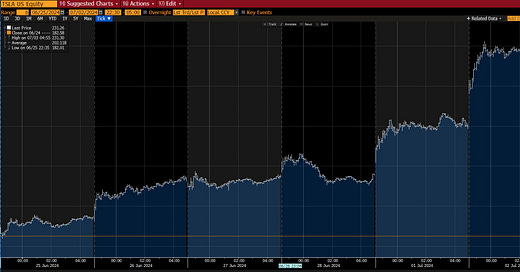Tesla Beats Q2 Delivery Estimates by 2% & Stock is Up by 10%--Gift for Short Sellers
Stock is up 27% in 6 trading days in possible anticipation of a beat, which was only 2%. Now Q2 earnings is the next catalyst and it may not be positive
Tesla saw its Q2 global car sales fall by 4.8% YoY after an 8.5% YoY drop in Q1. This is the first-ever 2-consecutive quarters of annual declines for Tesla.
Despite two annual declines in quarterly car sales, Tesla still trades like a growth stock with a 2025 PER of 70x based on consensus estimates. The stock rose by 15% going into the Q2 delivery repor…
Keep reading with a 7-day free trial
Subscribe to Motorhead to keep reading this post and get 7 days of free access to the full post archives.





